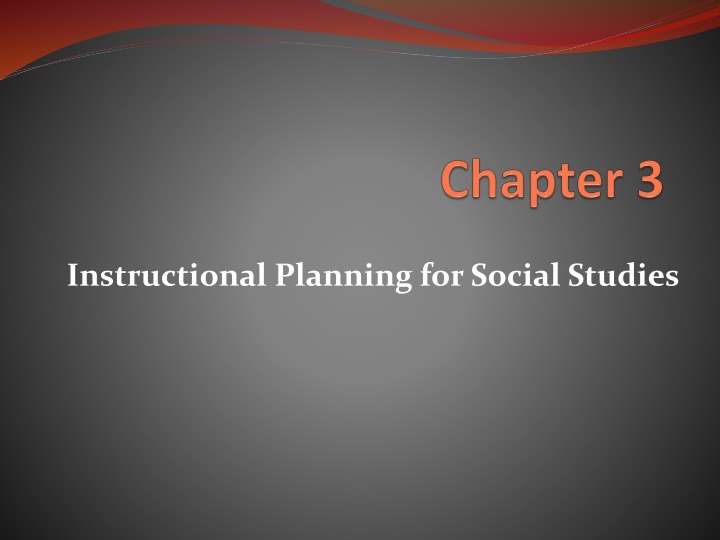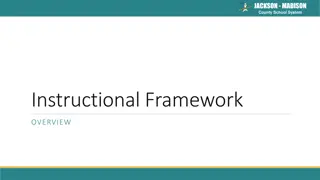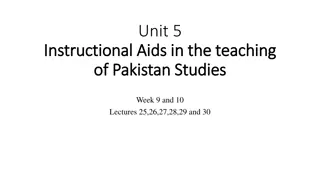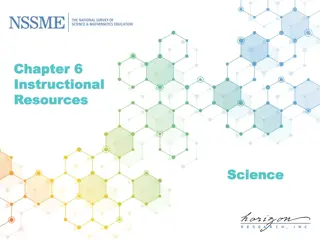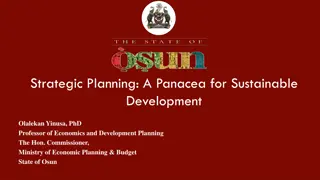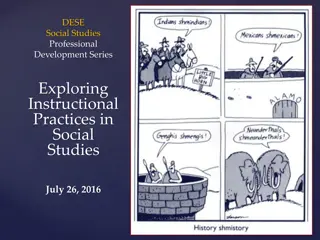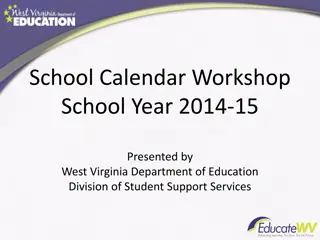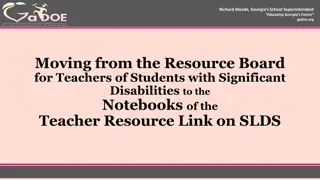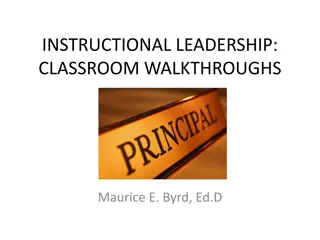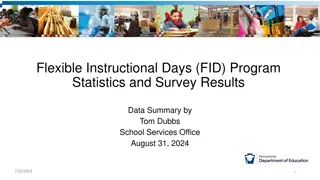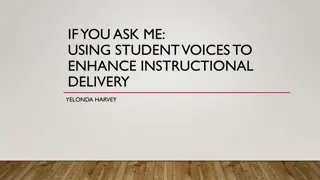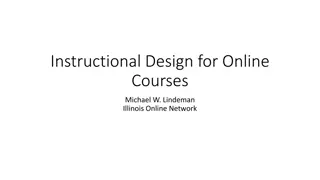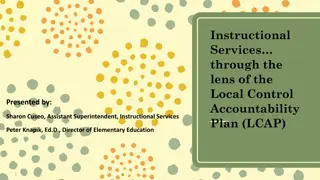Effective Social Studies Instructional Planning
Dive into the world of social studies instructional planning, focusing on teachers' challenges, planning strengths and weaknesses, diverse student needs, unit design, lesson objectives, and classroom environment creation. Explore the significance of planning, unit types, setting instructional objectives, and collaborative planning experiences. Reflect on memorable educational lessons and their impact on instructional planning. Gain insights into unit topic selection, freedom in curriculum choices, and the concept of webbing in planning.
Download Presentation

Please find below an Image/Link to download the presentation.
The content on the website is provided AS IS for your information and personal use only. It may not be sold, licensed, or shared on other websites without obtaining consent from the author.If you encounter any issues during the download, it is possible that the publisher has removed the file from their server.
You are allowed to download the files provided on this website for personal or commercial use, subject to the condition that they are used lawfully. All files are the property of their respective owners.
The content on the website is provided AS IS for your information and personal use only. It may not be sold, licensed, or shared on other websites without obtaining consent from the author.
E N D
Presentation Transcript
Looking Ahead What problems do teachers have when planning for instruction? What are your strengths and weaknesses as a planner? What do you need to be able to do in order to plan a teaching unit? Are you likely to need to rely heavily on a textbook? What purposes do other teaching plans serve? Are you planning to meet the needs of all of your students, including those with special learning needs and those whose cultural background is different from your own?
Can You? Plan an instructional social studies unit? Identify and describe different types of units? Write instructional objectives? Establish a set in a lesson? Identify the steps in a case study?
Do You? Have experience in collaborative planning? Know how to go about choosing a unit topic? Know how much freedom teachers have about what they teach? Know what is meant by the term webbing when referring to planning? Have an understanding of instructional objectives?
Focus Activity What was the most memorable lesson/unit you experienced as a student? Why makes the lesson/unit memorable? Discuss the details of experiences and compare with classmates. Do your educational experiences share common attributes with others? If so, what attributes? Do you think these experiences will have an impact on how you plan for instruction? If so, how?
Why is Planning Important? Helps narrow down the large breadth of information or knowledge. Planning utilizes various resources to create an environment where learning can be maximized. Teachers can have a greater sense of accomplishment when their planning comes to life.
Setting the Stage: Creating the Environment What are the predictable hallmarks for creating a success classroom environment? Sense of Anticipation Feeling of Purpose/Direction Awareness Continuity Atmosphere of Involvement Awareness of Leadership
Why Dont Teachers Plan? Not Enough Time Failure to set Time Priorities Depending on Previous Material Procrastination Failure to Communicate Experience Lack of Interest in Content/Subject Lack of Energy Inability to deal with Peer Pressure
Textbook Centered Units What are the instructional advantages to using textbook-centered units? Common Reading Material Unify Instructions Peace of Mind for Teachers
Types of Planning for Social Studies Units Expanded Textbook Units Collaborative Units Teacher Developed Units
Deciding on Unit Topics What are the four stages for deciding on a unit topic? coming up with a menu of possible topics, narrowing the field and finding a broad focus, identifying a particular topic and refining that selection into a title that adds zest and uniqueness (takes it out of the boring and mundane class), and deciding on the direction and structure that studying that topic ought to take.
Developing the Unit Plan What are the three types of unit plans? Resource Unit Sketch Units Teaching Units What are the pros and cons to each type of unit plan?
Instructional Objectives What are objectives? Why is language so important when writing behavioral objectives?
Content Outlines and Flowcharts How do content outlines help teachers? Help teachers and students discover the structure of the topic being studied. Suggest the order of the teaching itself.
Concept Webs Why should a teacher utilize a concept web when planning? Frames the big picture of a unit Shows how the various concepts covered in a unit are linked or interrelated Near the center of the web are the broad topics and most important ideas Peripheral layers show the subordinate and less important ideas
Moving Toward the Development of Activities What is the importance of activities? Why do you think this phase is often referred to as the developmental phase of the unit? What is the culminating phase?
Finding and Using Prepared Units Where can you find prepared units? Commercial Magazines: Instructor, Teacher, Learning, or Mailbox. Professional Journals Social Education, Social Studies and the Young Learner, The Social Studies, The History Teacher, The Clearing House, Childhood Education, and Social Studies Research and Practice University Libraries Other Methods Textbooks Conferences
Finding and Using Prepared Units What are the key concerns when using prepared units? Adaptation Vitality and Motivational Appeal Availability of Resources
Planning for Shorter Instructional Sequences What are the similarities and differences between a unit plan and a lesson plan? What are some necessary components of a lesson plan?
Looking Back Time is a major problem teachers face when planning for instruction Unit is the term most often used to describe the long-term planning a teacher does to teach a topic There are three kinds of teacher-made units Collaborative or Team units Teaching units Sketch units Short-term planning most often takes the form of lesson plans
Extension Your principal charged you with a task of forming a social studies committee. What are the advantages/disadvantages to having a committee like this in a school? Do you think having teacher input on curriculum planning/reform would produce better curriculum for the students? Why or why not? What are the qualities a teacher should possess to be on this committee? Of these qualities, which are the most important? How should these teachers be selected?
Extension Once the committee has been formed and organized, the teachers get to work. Imagine your group is the committee. Create a scope (what will be taught) and sequence (when) for your grade level s social studies curriculum. Be sure that you meet all required state standards. The scope & sequence should be detailed and be for the entire school year.
Self-Test What are some reasons that teachers cannot always plan as effectively as they should? 2. What are some of the characteristics of a classroom where good planning is going on? 3. How do the varying types of units discussed in this chapter differ? 4. What is a collaborative unit? 5. What are the elements necessary in a unit plan? 1.
Resources Federal Resources for Educational Excellence www.free.ed.gov The Gateway to 21st Century Skills www.thegateway.org PBS Teachers: Resources for the Classroom - www.pbs.org/teachers Roberts, P. & Kellough, R. (2006). A guide for developing interdisciplinary thematic units (4th Edition). New York: Prentice Hall.
